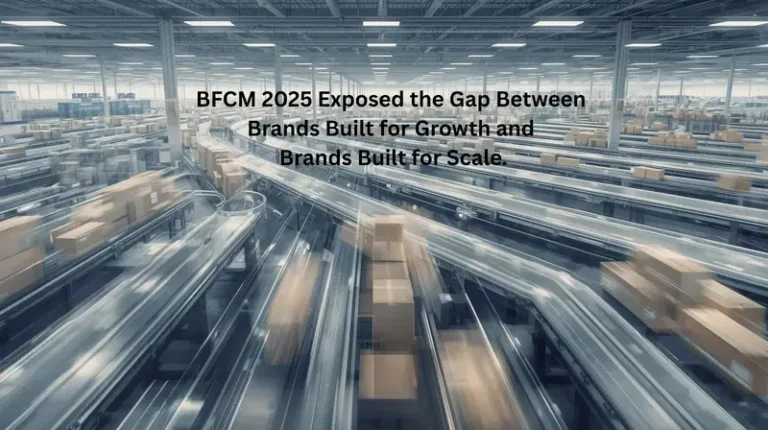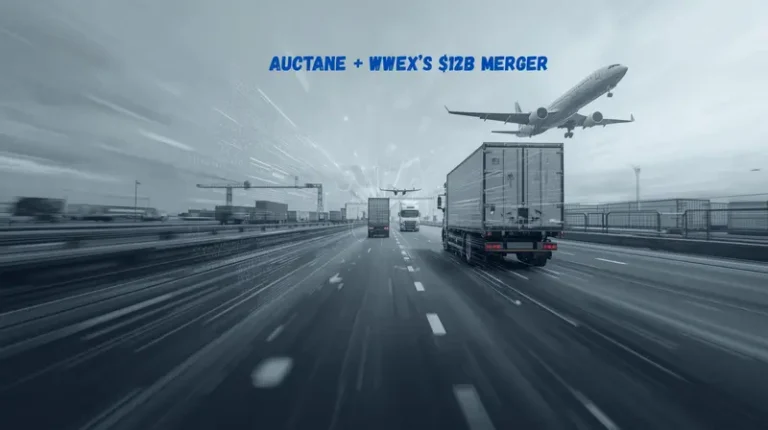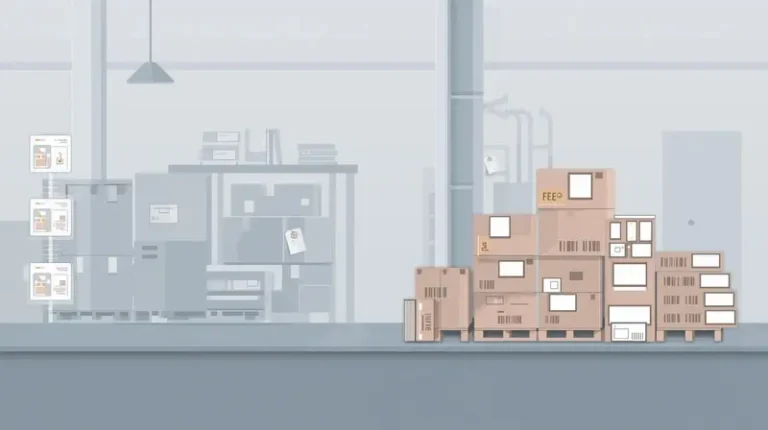How to Reduce Returns in Ecommerce: Innovative Solutions for Balancing Convenience and Profitability in Fashion

Last updated on October 03, 2025
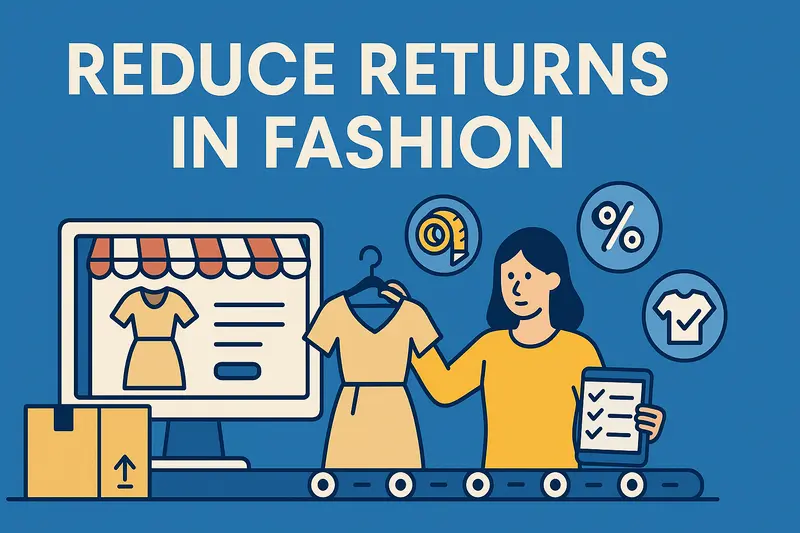
The Fashion-Returns Problem in Ecommerce Returns
Fashion is notoriously the category with one of the highest return rates, especially in online shopping. It’s not uncommon for online apparel retailers to see return rates of 30 – 40% or even higher. Why so high? A perfect storm of factors: sizing and fit issues, customers ordering multiple sizes or styles to try on at home, rapidly changing trends (where a dress might be out of style by the time it’s delivered, causing a return), and of course behaviors like wardrobing (wearing once and returning). Essentially, buying clothes or shoes without trying them on carries inherent uncertainty, and that uncertainty often translates to returns. Clear and comprehensive product descriptions are crucial in setting customer expectations and reducing return rates.
This high return rate is a double-edged sword. On one hand, offering easy returns in fashion is practically a requirement to get customers to click “Buy”. Shoppers are more comfortable purchasing a $200 pair of boots online if they know they can send them back for free if they don’t fit. In fact, 67% of shoppers check the returns policy before buying, and many will only purchase if free returns are offered (Invesp). So convenience drives sales. But on the other hand, each return eats into profitability. The cost of shipping, processing, and then potentially marking down a returned garment can be significant, some estimates say handling a return can cost 20 – 50% of the item’s price in lost value and costs.
Make Returns Profitable, Yes!
Cut shipping and processing costs by 70% with our patented peer-to-peer returns solution. 4x faster than traditional returns.
See How It WorksFor fashion retailers, this means constantly walking a tightrope: how do you make returns convenient enough to encourage purchases, but not so loose that you hemorrhage money? Moreover, there’s the brand angle; a seamless, generous return policy can be a brand differentiator (Zappos built huge loyalty with 365-day returns), but now even they face pressure as the economics get tough. Implementing industry-specific best practices can help fashion retailers manage return rates more effectively.
Another layer to the fashion returns problem is the environmental impact. Apparel returns often don’t go back on the shelf due to seasonality or wear; some studies found a chunk of fast-fashion returns may even end up in landfills. Plus, shipping clothes back and forth contributes to carbon emissions. There’s growing consumer awareness and slight guilt around that, so retailers feel pressure to handle returns sustainably too. Effective inventory management is essential in handling the logistics of returns and minimizing associated costs.
And let’s not forget fraud and abuse in fashion returns, wardrobing is a big one as mentioned, and bracketing (ordering 5 dresses, keeping 1) is almost an accepted norm now among shoppers. It’s tricky because some of that is legitimate (they truly didn’t know which size or style would work), but it drives up return volumes nonetheless.
So, the problem in summary: Fashion ecommerce must allow and even encourage customers to “try before they fully buy” to mimic the fitting room experience, but doing so leads to very high return rates that can slash into profit margins. The challenge is to innovate solutions that can satisfy customers’ desire for convenience and proper fit, while keeping the return rate and its costs in check. Fortunately, the industry is exploring several innovative strategies, from leveraging technology to rethinking business models, to tackle this balancing act.
Virtual Try-On + AR
One of the most promising tech solutions for reducing fashion returns is the use of virtual try-on and augmented reality (AR). The idea is simple: give customers a way to see how a clothing item or accessory might look and fit on their body (or foot, or face) digitally, before they purchase, thus reducing the guesswork. Accurate product descriptions, combined with virtual try-on technology, can significantly reduce return rates by setting clear customer expectations.
Imagine shopping for glasses online and using your phone camera to see a live AR overlay of the glasses on your face; many eyewear retailers do this now. Or uploading your measurements or a body photo and seeing a dress virtually “draped” on a 3D avatar of yourself. These experiences aim to bridge the gap between in-store try-on and online convenience.
Convert Returns Into New Sales and Profits
Our peer-to-peer returns system instantly resells returned items—no warehouse processing, and get paid before you refund.
I'm Interested in Peer-to-Peer ReturnsHow does this help? If done well, virtual try-ons can significantly cut down returns by setting better expectations. Customers can filter out items that clearly won’t look right on them. Studies have shown companies using virtual fitting tech have decreased return rates; some report reductions of up to 36% in returns (Retently) due to shoppers having a better sense of fit and style before buying. One case example: TA3 Swim, a swimwear brand, implemented a virtual fitting room tool and saw a 47% drop in size-related returns. That’s huge for the bottom line in a category notorious for fit issues. By providing a realistic preview of how items will look and fit, virtual try-on technology helps manage customer expectations and reduce the likelihood of returns.
There are a few types of virtual try-on tech:
- AR Visualization: Using your smartphone or webcam to overlay clothing or accessories on your live image. This works well for things like eyewear, hats, jewelry, makeup (think of those filters that show you lipstick or hair color). For full apparel, AR can show how a pattern or style might look on you, but accurate fit (tightness, etc.) is harder to convey with simple AR.
- Virtual Fitting Room with Avatars: This is where you input data, either body measurements or a body scan, and the system creates a 3D avatar of your body. Then it simulates how the clothing fits that avatar. Companies like Zeekit (acquired by Walmart), True Fit, and others do this. Some require you to do a quick scan with your phone camera to get your shape. The result is more about fit, it might show if a shirt would be loose in the waist or tight in the shoulders on your shape. Some solutions even let you see fabric stretch or drape.
- Size Recommendation Algorithms: Not exactly AR, but related: based on what sizes of other brands fit you, an AI can suggest the best size in a new brand. Services like True Fit or Fit Predictor ask what size you wear in known brands and styles, then predict the equivalent for the item you’re viewing. It’s a data-driven virtual “try-on” in the sense that it forecasts fit.
By giving customers these tools, fashion retailers can preempt a lot of the “buy two sizes and return one” behavior. If I’m pretty confident after using the tool that the medium size will fit me well, I might not order a large size as well, “just in case,” thus reducing returns from bracketing. Also, seeing the item on a representation of me might make me realize “oh, that color washes me out” or “that cut doesn’t suit my body type,” so I don’t buy it in the first place (which is a lost sale but better than a sale-then-return, arguably).
That said, virtual try-on is still improving. It’s not perfect; sometimes the graphics are a bit off, or it’s hard to capture the exact fabric movement. Also, it requires customers to engage with the tech, which not all will do. But as AR becomes more commonplace (with Snapchat filters, etc.), people are warming up to it. The convenience of doing a pseudo-fitting room session at home is quite appealing.
From a profitability standpoint, implementing AR/virtual try-on is an investment (tech integration, possibly licensing software, or building it). But the ROI can be strong if it materially drops return rates. It can also boost conversion, shoppers might be more likely to buy if they see it on themselves virtually, and like it. It’s like giving them more confidence in their choice.
In conclusion, Virtual Try-On and AR bring the fitting room to the living room. By leveraging these technologies, fashion retailers aim to reduce the number of “trial” purchases that turn into returns. Early results from those who’ve adopted it are encouraging in terms of return rate reduction (Retently). As the tech gets better and more widespread, it could become a standard part of online fashion shopping, benefiting customers (who get what they expect) and retailers (who suffer fewer returns and more satisfied buyers).
Try-Before-You-Buy Models for Online Purchases
What if you could let customers literally try products at home before committing to payment? That’s the concept behind Try-Before-You-Buy (TBYB) models. In fashion, this often manifests as services or programs where a customer can order several items, have a window of time to try them on, and only pay for what they keep (or conversely, get refunded for what they return). It formalizes and streamlines the bracketing behavior, but in a way that can be beneficial to both parties if managed right. Implementing structured processes to manage returns is crucial for the success of Try-Before-You-Buy models.
Examples:
- Amazon Prime Wardrobe / Try Before You Buy: While recently discontinued to double down on Amazon’s AI-powered solutions, the program operated successfully for many years. It allowed Prime members to pick out, say, 3 – 7 items (depending on the promo) with no upfront charge. Amazon shipped them in a resealable box. The customer had 7 days to decide what to keep. They were only charged for those they kept (Amazon charged the card after the try-on period for items not returned, or earlier if they checked out on the app, indicating what they kept). Anything else, they dropped back in the box with a prepaid label and sent back. This model encouraged customers to try more items (boosting conversion), but by controlling the process, Amazon could manage the logistics of it.
- Stitch Fix and Trendsend (EVEREVE): These are styling box services, a slightly different but similar idea: a curated box of outfits is sent, you try them on at home, and only pay for what you keep; the rest goes back. The difference is that you don’t pick the items; a stylist or algorithm selects them for you based on your defined preferences.
- Warby Parker Home Try-On: For glasses, Warby Parker will send you 5 frames to test out at home for 5 days, free of charge, including a prepaid return. You then order the ones you want with your prescription. This is a classic try-before-buy and has been hugely successful for them in reducing the barrier to purchasing glasses online.
From the customer’s perspective, TBYB is fantastic, it’s like shopping in a store dressing room but at home, with your wardrobe and mirrors, etc. It eliminates the risk of losing money on returns because you’re not even charged (or you know you’ll get refunded seamlessly). It often means they might order more items up front (helping sales) because they have that safety. Accurate product information is essential to ensure that customer orders meet their expectations, reducing the likelihood of returns.
From the retailer’s perspective, TBYB can increase initial order sizes and attract customers who are on the fence. It also structures the return process. Instead of random returns at random times, it’s an orchestrated trial. You can plan for those returns (like the box is designed for easy return shipping, the items are expected to come back if not kept). Also, because you have the customer’s card on file and authorization, the risk of not getting paid is lower than, say, someone buying and then doing a chargeback after returning, here you control the flow.
ShipStation vs. Cahoot: 21x Faster, Real Results
Get the inside scoop on how a leading merchant switched from ShipStation to Cahoot—and what happened next. See it to believe it!
See the 21x DifferenceHowever, the challenge is that this model, by definition, means a lot of merchandise is going out that will come back. So you need very efficient reverse logistics. The profitability depends on a few factors:
- Keeping return shipping costs low (perhaps subsidized by bundling multiple items in one box rather than separate orders).
- A high conversion from trial to purchase, you want customers to keep enough items on average to cover the cost of shipping the rest back. For example, if a customer tries 5 and keeps 1 cheap item, you probably lost money on that transaction. But if they keep 2-3, you might come out ahead due to increased sales volume.
- Potentially charging a fee if they keep nothing. Some services might eventually implement a small styling fee or deposit that’s waived if you purchase something, just to discourage frivolous try-ons.
- Ensuring speedy turnaround of returns so items can go to the next customer or back to stock quickly.
A benefit is that when customers have that “home fitting room” experience, they might actually find more that they like, resulting in a higher overall spend and fewer returns down the line because they got the right item. It can also build loyalty because customers appreciate the convenience and trust the process.
To make TBYB work, a retailer often needs a well-integrated system (so you know exactly when the trial period is up, to charge correctly, etc.) and clear communication with the customer (so they know how to return, by when, and what they’ll be charged).
Balancing convenience vs profitability in TBYB:
- Convenience is high: the customer is super happy.
- Profitability can be tricky: if not managed, it could encourage excessive returns (since there’s not even a temporary financial outlay by the customer, they might order things they’re only slightly interested in). However, because it’s a structured program, you can gather data: maybe you see customers only keep 20%, then you might tweak what you allow them to order or improve recommendations to increase the keep rate.
- Some retailers might reserve TBYB for members or high-value customers who are less likely to abuse it. That way, it’s an investment in customer experience for the most loyal segment.
In summary, Try-Before-You-Buy models are an innovative way to essentially embrace returns as part of the sales cycle in fashion. They acknowledge that trying on multiple items is normal for clothing and make it part of the service offering. When executed well, it can boost sales and brand affinity. But it requires tight logistics and a good understanding of the economics to ensure that the increased sales from TBYB outweigh the costs of the many returns it generates. It’s a bold strategy to find that sweet spot where convenience and profitability meet.
Cut Costs with the Smartest Shipping On the Market
Guranteed Savings on EVERY shipment with Cahoot's AI-powered rate shopping and humanless label generation. Even for your complex orders.
Cut Costs TodayEco-Friendly Reverse Logistics
The fashion industry is increasingly under scrutiny for its environmental impact, and returns contribute to that problem. Eco-friendly returns solutions aim to reduce the carbon footprint and waste associated with the returns process, while ideally also saving costs (since often, what’s eco-friendly, like using less shipping, is also cost-friendly).
Here are some innovative approaches on this front:
- Localized Return Drop-offs and Consolidation: Instead of each customer shipping individual return packages back to a central warehouse hundreds of miles away, retailers are partnering with networks of drop-off points (like Happy Returns, now owned by UPS, or physical store partners). Customers can bring their returns (often without needing to box them) to a local drop-off center. These centers then consolidate many returns into one bulk shipment back to the retailer’s hub. This dramatically cuts down on shipping materials (one big box vs dozens of small boxes) and trips (one truck vs many). It’s greener and cheaper. Plus, customers often find it convenient to drop off at, say, a mall kiosk or UPS store with just a QR code. Offering store credits instead of cash refunds can also help mitigate the financial impact of returns.
- Regional Processing (Reducing Distance Traveled): If you have multiple warehouses, you encourage customers to send to the nearest one. Less distance = less fuel burned. Also, you might inspect and restock locally, then sell to local customers, creating a more circular local loop. For instance, a return in California goes to a CA facility and then is sold to the next CA customer, instead of ping-ponging across the country. Partnering with a reliable shipping company is essential to ensure efficient and eco-friendly logistics.
- Peer-to-Peer Returns (Direct Resale): Shipping the item directly from one customer to the next buyer without it detouring to a warehouse. This is inherently eco-friendly because it eliminates at least one shipping leg (and all the packaging and handling that goes with it). It’s like reusing the original shipment for a second customer, rather than doing a round trip and then a new trip. Cahoot’s model emphasizes not just cost savings but also the carbon reduction from cutting those extra journeys. For fashion, this can be great for items that are in hot demand but maybe out of stock; you turn a return into a new sale immediately and avoid moving it twice.
- Biodegradable or Reusable Packaging: Many retailers are looking at packaging that can be reused for returns. Some send a resealable mailer bag, the customer just peels a second strip, and the same bag becomes the return package. That’s a simple idea, but it reduces waste because you’re not using a whole new box. Others provide returnable totes that can be shipped back and reused multiple times. Though a bit costly upfront, reusing packaging multiple times is greener.
- Conscious Customer Incentives: To align customers with eco goals, some brands offer incentives for eco-friendly return choices. For example, “Drop off your return at our partner location instead of shipping from home, and get a $5 credit.” This nudges behavior that saves the company money (shipping label cost) and the environment (one less truck pickup). Or they might encourage opting for slower shipping for returns if it means consolidation (like “if you’re willing to wait a couple extra days for your refund, we’ll group your return with others to reduce emissions”, maybe not common yet, but conceptually possible).
- Donation or Redistribution of Returns: For items that can’t be resold as new, instead of trashing them (which is both a waste and creates landfill mass), some brands partner with charities to donate usable returned clothing. It’s eco-friendly and socially responsible. Some even give the customer the option: “Would you prefer to donate your return for a smaller refund or credit”? A few might choose that if they feel altruistic, especially if the refund value is low.
- Repair and Refurbishment Programs: Encouraging repair over return for minor issues is another angle. If a customer wants to return a jacket because a button fell off, an eco-friendly mindset would be to offer to reimburse a local tailor to fix it, or send them a repair kit, rather than shipping a whole new jacket. Patagonia is famous for promoting repair, while they take returns too, they often encourage fixing gear, which reduces waste.
Now, how does this balance convenience and profitability? A lot of eco-friendly measures, fortunately, do align with cost savings. Consolidating shipments and reducing distances saves carrier fees. Reusable packaging might cost more per unit, but if used multiple times, could lower packaging costs overall. However, some green initiatives might sacrifice a bit of convenience, for example, asking a customer to drop off rather than schedule a porch pickup might be less convenient for them. That’s why some retailers sweeten the deal (with a small incentive or highlighting the ease of drop-off, which often is pretty quick).
Importantly, many customers, especially younger ones, appreciate brands that act sustainably. If you communicate these eco-friendly return options as a brand value, you might get buy-in and even preference from consumers. It can enhance brand loyalty, which long-term is profitable.
An example to illustrate: H&M offers buy online, return in-store. Customers like it because they get an instant refund in person and maybe shop more while there; H&M likes it because it gets people in stores and avoids mailing items around. And environmentally, it’s efficient because trucks that were already going to supply the store can take back returns in bulk.
In summary, eco-friendly logistics in returns are about minimizing the back-and-forth, fewer trips, less packaging, and smarter routes. These innovations aim to make the returns process gentler on the planet and often cut costs for the retailer too. The key is doing it in a way that still feels convenient to customers (or at least, they understand the benefit and are on board with it). When done right, it’s a win-win: you uphold your brand’s sustainability ethos, appeal to eco-conscious shoppers, and save money by trimming waste from the returns operation.
Personalized Returns Experiences for Customer Satisfaction
Personalization isn’t just for marketing and product recommendations, it can extend into the returns process as well. The idea of a personalized returns experience is tailoring the returns process or options to the individual customer’s situation, preferences, or value to the brand, in order to both delight the customer and protect profitability.
Here are some ways personalization can come into play with returns:
- Loyal Customer Privileges: For your best customers (say those in a VIP tier or who have high lifetime value), you might offer “white-glove” return treatment. This could mean longer return windows, free return shipping always (even if you charge others), or even home pickup service. Some upscale fashion retailers or subscription services offer at-home pickup of returns for top clients, a courier will come to your house to collect the items, which is ultra-convenient. This level of service makes those customers feel valued. Yes, it costs more, but if someone spends thousands a year on your fashion line, it’s worth keeping them happy. It’s akin to how AMEX offers concierge services to platinum cardholders, you’d do a similar thing for VIP return handling. By analyzing return data, retailers can identify patterns and tailor their return policies to different customer segments.
- Segmented Policies: You can quietly segment your customers by return behavior. For chronic returners, you might tighten things (shorter windows or restocking fees applied), ideally communicated in a soft way. For reliable customers, you might bend rules, like “Oh, you’re two days past the return window? No problem, we’ve processed it anyway because you’re a valued customer.” Some large retailers’ systems auto-authorize exceptions for customers who rarely ask for them, but might flag or deny for those who repeatedly abuse. The customer sees it as personalized leniency just for them (“they made an exception for me!”), which can build goodwill.
- Customized Exchanges/Replacements: A personalized experience could also mean guiding the customer to find something they do love if the original didn’t work out. For instance, a return portal could say: “Sorry that cocktail dress didn’t fit. Based on your feedback and your past purchases, we think these three dresses might suit you better. Would you like to exchange instead of returning?” This feels like a personal shopping service in the returns flow. If they take an exchange, you saved the sale. Stitch Fix does something akin to this by learning your style; if you return things, they use that info to fine-tune your next box. Providing personalized return experiences can build customer loyalty by making customers feel valued and understood.
- Content and Support Tailored to Reason: If a customer indicates a reason for return, you can personalize what happens next. Say they chose “didn’t fit”, the confirmation page might show a friendly video or graphic about your sizing guide, encouraging them to use it next time (educational). If they chose “item defective,” you might immediately prioritize that return and maybe send a replacement without waiting (like, “We’re so sorry. We’ll send a new one right away, and you can send the faulty one back whenever.”) That’s a personalized remedy based on their scenario. Essentially, adjusting the resolution to the context.
- Language/Tone Preferences: Some brands allow customers to set preferences that could extend to returns. Maybe communication tone (some might like super formal vs casual). Or preferred channel: one customer might want everything via email, another via SMS. So your return notifications or interactions could align with that. It’s a subtle personalization but contributes to a seamless experience.
- Proactive Personalization: If data shows a customer has had multiple returns of the same type of item (e.g., they keep returning jeans), a clever system might proactively reach out: “We notice you’ve had trouble finding the right jeans. Can we help? Our stylist can recommend a pair that fits your style and size.” It’s addressing their specific struggle, which can reduce future returns and make them feel catered to.
- Personalized Return Methods: Perhaps offer different return method options (mail, drop-off, pickup) and highlight the one that seems best for them. If you know a customer always uses UPS drop-off, next time you might pre-select that option for them in the portal (while still allowing change). Or if someone is in NYC and you have a store nearby, you could say, “Did you know you could bike messenger this back to our Soho store today for instant credit?” Something that suits their locale and behavior.
Balancing convenience and profitability here means giving a bit extra service to those who merit it (ensuring their significant spend continues and outweighs the costs) and gently dissuading those who might be costing more than they’re worth with too many returns. Personalization lets you avoid a one-size-fits-all policy that might be too generous for some and too strict for others.
In fashion, especially, shopping and returns can be an emotional journey; you want a customer to feel good about the process, even if the item didn’t work out. A personalized touch can turn a potentially negative experience (returning something you were excited about, but it didn’t work) into a neutral or even positive interaction (“They took care of me, and I found something else I like”).
No More Return Waste
Help the planet and your profits—our award-winning returns tech reduces landfill waste and recycles value. Real savings, No greenwashing!
Learn About Sustainable ReturnsWe should note that technology is the enabler here: CRM systems, data analytics, AI: these allow personalization at scale. A small boutique might do this naturally (the owner knows customers by name, etc.), but at ecommerce scale, you rely on systems to mimic that personal touch.
Example: A high-end fashion site might have a tiered membership. A Platinum member opens the return portal, it says, “Hi Alice, we’ve got you covered. We’ve scheduled a FedEx pickup tomorrow at your address, no charge.” Meanwhile, a new customer sees standard options like “print a label”, etc. Alice gets wowed by convenience tailored to her VIP status, new customer still gets a decent baseline service. Both are handled appropriately for their relationship with the brand.
In conclusion, personalized return experiences are about recognizing that not all customers and return situations are the same. By tailoring the process, communication, and options, retailers can make returns feel less like a generic transaction and more like a continuation of the brand’s customer service ethos. For fashion brands, which often cultivate a strong brand identity and customer connection, carrying that through to the returns process can set them apart. It helps maintain the balance where convenience is delivered where it counts most, and profitability is managed by not over-subsidizing returns for those who maybe take advantage.
Summary
Overall, innovating in returns, through tech like virtual try-on, new models like TBYB, greener logistics, and personalized service, is how fashion ecommerce is striving to solve the returns conundrum. Managing ecommerce returns effectively is crucial for maintaining profitability and customer satisfaction. Brands that succeed in this will enjoy loyal customers and healthier margins, truly balancing convenience and profitability in the long run. Ultimately, prioritizing customer satisfaction through efficient returns management can lead to long-term success for fashion ecommerce brands.

Turn Returns Into New Revenue
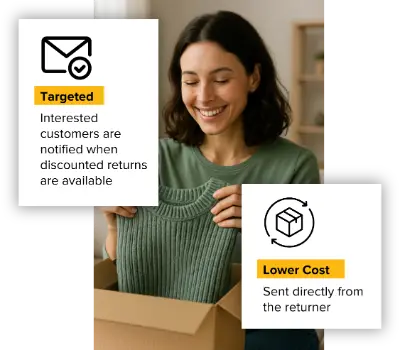

 24 minutes
24 minutes
